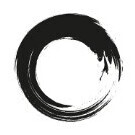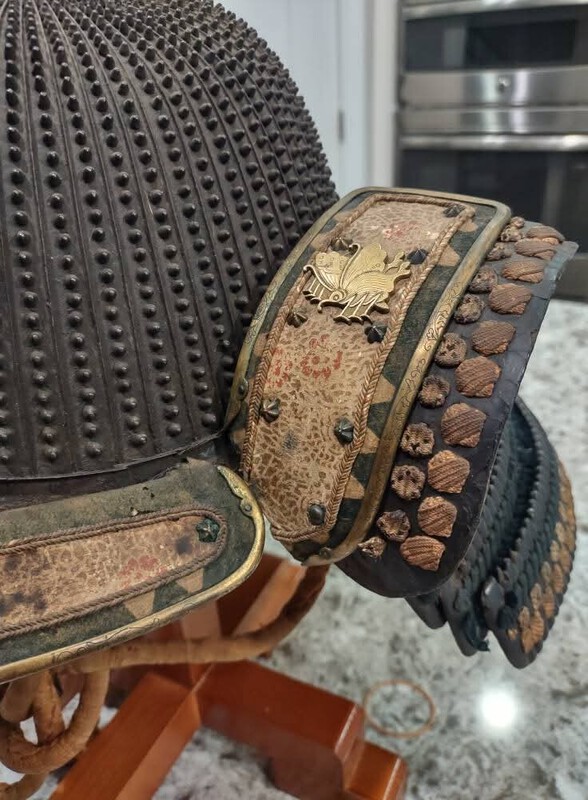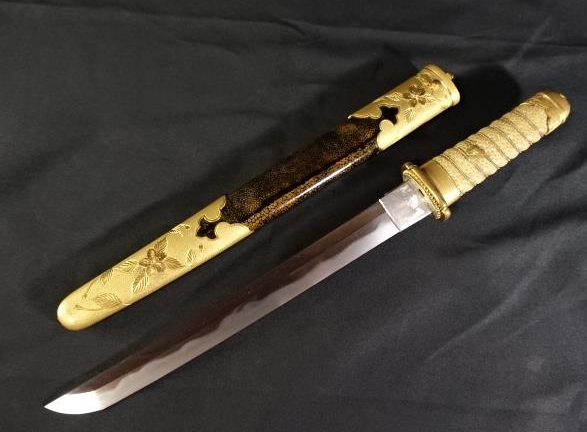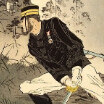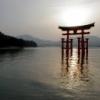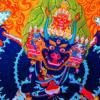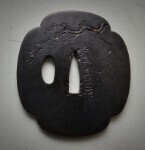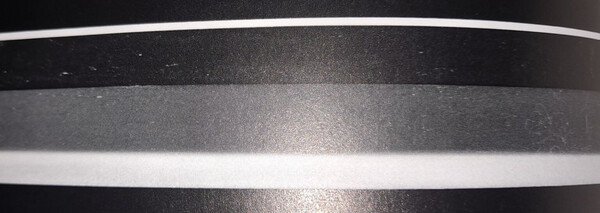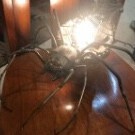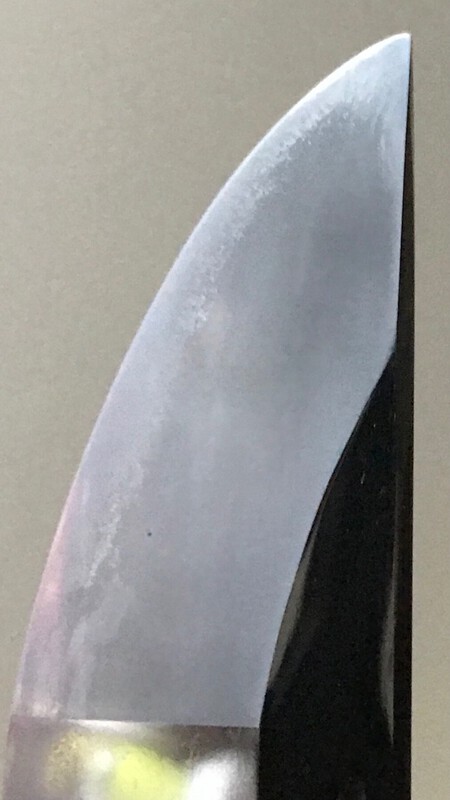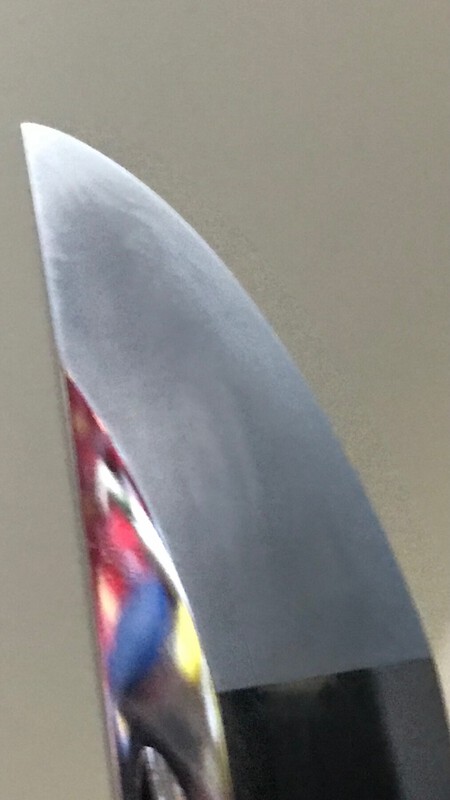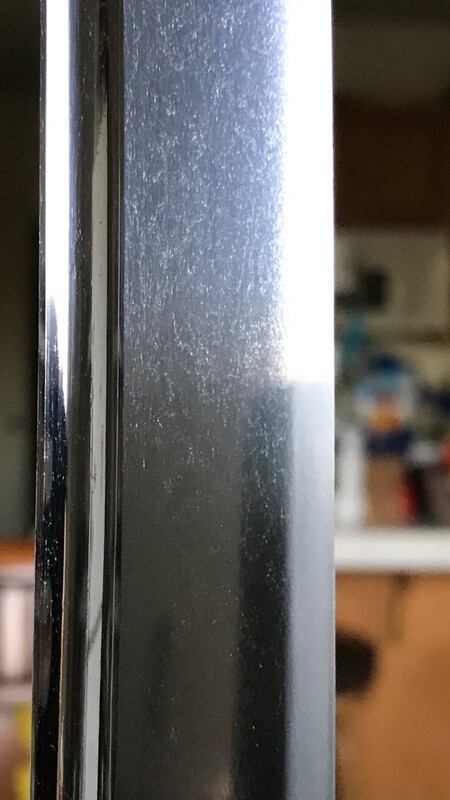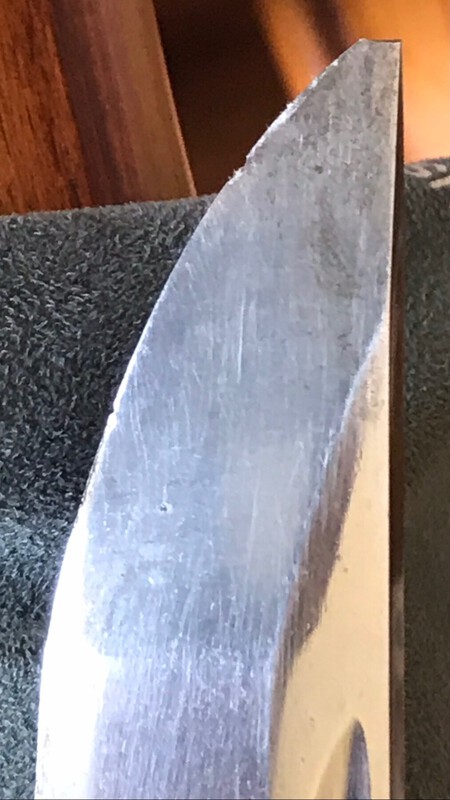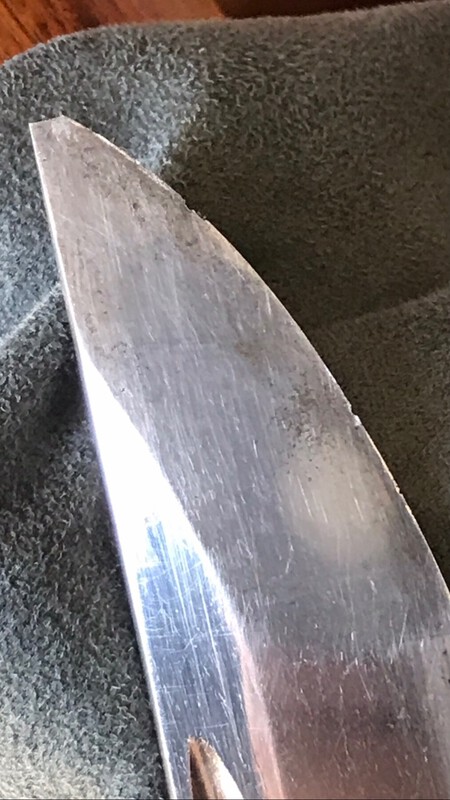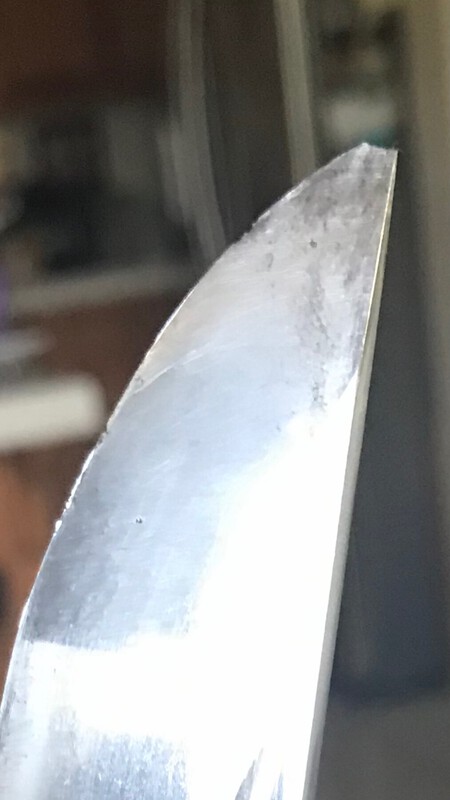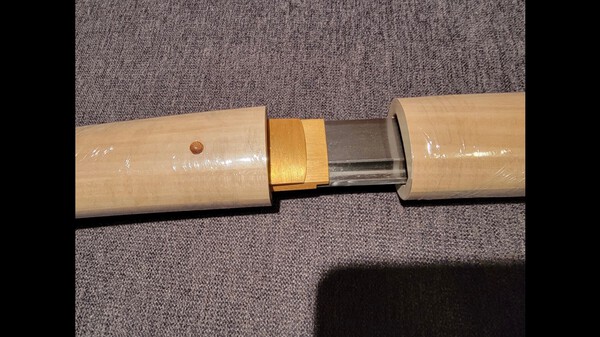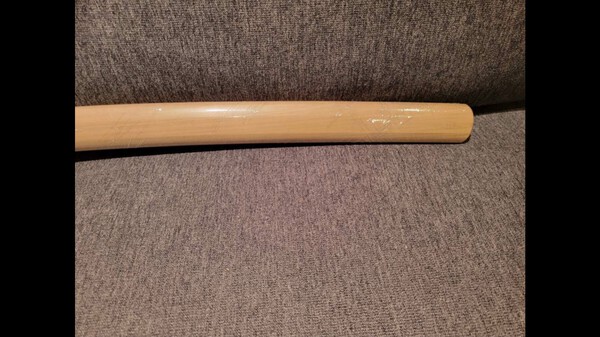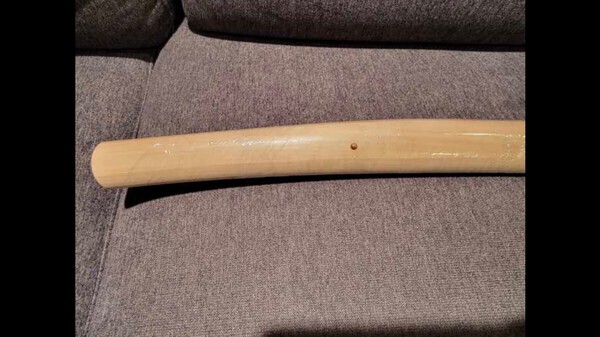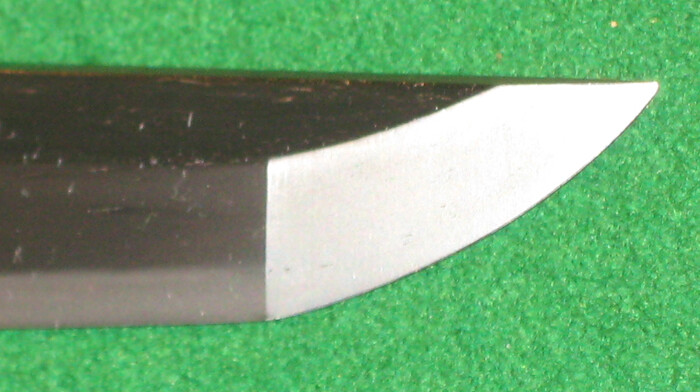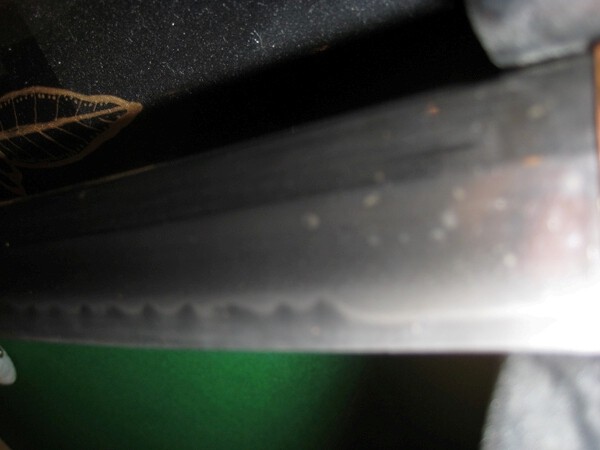Leaderboard
Popular Content
Showing content with the highest reputation on 04/13/2025 in all areas
-
8 points
-
4 points
-
I have looked at that Ko-Naminohira they have for a long time. I have never dared to ask their price as I knew I couldn't afford it. I think their price is reasonable but I cannot afford it. It is in my opinion very nice sword and the best Ko-Naminohira tachi that is currently available in the open market. Just remembered that here is one available Ko-Naminohira tachi that might fit your criteria (if you can live with mumei): https://toyuukai.jp/products/太刀-無銘-古波平-保存刀剣鑑定書-tachi-no-signature-ko-naminohira-nbthk-hozon-品番-ka068 Now I think I have collected one of the largest private databases in the last 10+ years, currently 14,000+ pre-Middle Muromachi swords. I did some digging to show people how rare the very long old 80-90cm tachi are. I did not include ōdachi into this count, only long tachi that are pre-Muromachi period. In total I found 297 tachi in length range of 80 to 90 cm in my data. However I believe 171 of these are 100% locked in Japan (due to shrine/museum/temple ownage, designation level that keeps them in Japan etc.). I found 126 of them that would be perhaps possible to own outside of Japan, however I would assume large portion of these would also be locked in collections in Japan and around the world, I just haven't confirmed their current location/ownership for majority of them. Of course the total number of them is bit higher than the c.300 I have in my data. However as I have gone through all Nation and Province wide designations, the majority of NBTHK Jūyō, the collections of multiple major sword owning shrines and museums etc. I just cannot think there would be thousands of these hiding away. Some hundreds of quite unknown old long tachi I can understand but they are incredibly rare in overall. Probably crunched the numbers just to give an idea how rare these old long tachi actually are.3 points
-
https://sword-auction.com/ja/product/26326/as24386-ken-gassan-sadakatsu-august-1938nbthk-tokubetsu-hozon-token/ Interesting work3 points
-
2 points
-
I wondered why some posts when opened go to the last post but others start at the first post I like many others look at the 'joke' post but it always starts at the first post which is annoying (well it is to me)2 points
-
This was valid for some time during Covid I think You can apply again for Hozon and Tokubetsu Hozon in one application https://www.touken.or.jp/shinsa/fee.html BTW - Shinsa has again significantly raised fees for Juyo and TokuJu2 points
-
If the price is reasonable it would be a fine first sword. Good Kai Gunto mounts and nice looking older blade, many of us started with far less glamorous examples.2 points
-
1 point
-
1 point
-
YASUNORI I think. TAISHO date?1 point
-
1 point
-
These are great, your passion is clearly visible in your work. I saw some absolutely insane antique examples some years ago in a London museum, since then I've only seen fairly decent modern ones in plastic of fantastical creatures from Japan show up on ebay and the like when looking for other things so your idea of a Dune sandworm should not be too radical.1 point
-
Go into your profile, click account settings. On the left, content view behavior. You can choose where it goes. Also, if you click on the subject heading you are going to, it should take you to the last read comment. If it's not, clear your cookies and try again. But you can also click on the highlighted dot next to the subject....which will take you to the first unread comment. If you hover over that dot (on pc) a popup will tell you where it is taking you.1 point
-
1 point
-
This is no longer the case. The NBTHK is now awarding Tokubetsu Hozon for osuriage mumei Muromachi period swords, including those with only school attributions (not to a specific, famous swordsmith). I have seen an increasing number of osuriage mumei Muromachi blades receive Tokubetsu Hozon, even osuriage mumei wakizashi. A Tokubetsu Hozon Mihara was just recently offered for sale in the FB discussion groups.1 point
-
1 point
-
1 point
-
Hi Michael, Greetings! Please to meet you. I train at the Toyama-Ryu Iaido Association in Hong Kong, the Hong Kong branch of Zen Nihon Toyama Ryu Remei. Would be happy to link up with you in the future! Charles1 point
-
1 point
-
1 point
-
1 point
-
I hate to be the bearer of bad news... Even with just these two photos, it's clear this is NOT a genuine Japanese sword. Here is a really helpful link to help spot fakes like these. https://www.jssus.org/nkp/fake_japanese_swords.html Sincerely, -Sam1 point
-
I have a published and NBTHK paper undecorated tsuba in my collection. @ROKUJURO Jean C., would it be helpful for me to share my photos of it and the NBTHK paper? I like iron and the age of this tsuba and it came from the collection of one of my Japanese art sword teachers and artist who have passed away.1 point
-
I can recommend Ray from the bottom of my heart, amazing guy to deal with. I might personally recommend dropping the length criteria to 75cm+. I totally understand wanting an 80cm+ blade as my own collecting attitude is purely based on size and shape, I don't stress about quality or condition that much. However pre-Muromachi 80cm+ tachi are just really tough to find in general. When thy pop up you are most likely required to go for items attributed to schools that are not highly appreciated by sword connoisseurs in general but I personally like them. Here are some examples that I have found to be extremely interesting over the years. Prices will fluctuate. Unfortunately I was not in buying position when these were sold, just note that few of these were sold long long time ago and would most likely priced totally different today. Ko-Naminohira tachi 87,8 cm (this was an amazing sword, I am thinking it could pass Jūyō some day as to me this is historically very interesting sword) > https://www.aoijapan.net/tachi-mumei-ko-naminohira-2/ Hōju tachi 82,5 cm (this has been sold few times in Japan, unfortunately neither was possible for me)> https://sanmei.com/contents/media/O111235_S1300_PUP_E.html Hōju tachi 82,9 cm > https://web.archive.org/web/20200811025600/https://www.samurai-nippon.net/SHOP/N-187.html Aoi Art had this unknown Nanbokuchō Motoshige tachi 87,9 cm for sale two years ago, unfortunately buying it was not possiblte for me > https://web.archive.org/web/20230812005640/https://www.aoijapan.com/tachi-motoshigenbthk-tokubetsu-hozon-token/1 point
-
1 point
-
1 point
-
1 point
-
1 point
-
Hi Zachery, There will be no need to register a koshirae on tsunagi and you will be able to take it home with you, mo problem. What you propose with parts and a new bladeless tsuka is possible buy why bother? You'll get more bang for your buck - better quality pieces for the same money or same quality for less - if you buy an existing koshirae rather than go to the expense of having the tsuka made to fit your parts. Grey1 point
-
Piggybacking this thread with two new books just listed - both are Museum catalogues/catalogs and not scholarly works. Small collections with little information - picture books at best! https://au.blurb.com/b/12376932-tsuba-in-the-national-museum-of-norway Hard and softcover versions https://au.blurb.com/b/12376937-the-national-museum-in-warsaw-tsuba-collection Hard and softcover versions1 point
-
Original question before editing was - is certificate believable? My personal opinion - no, and NBTHK is unlikely to repaper it. BTW, I think with NTHK there is better chance. They use different standards and what I see as a problem for NBTHK will be less of an issue for others. A guess, but its after all a split issue. Then was a question - what is it then? I should have said more generally "late Muromachi" because objectively the seller's photographs are not the best. Also, assuming such questions are asked pre-purchase I am trying to emphasize the blade's quality - which is far from outstanding, at least in terms of nihonto aesthetic. Why? Its a long story which I am not motivated to explain given the manner of inquiry. Good luck on your first blade and have fun studying it and researching other similar examples. Its a nice weapon and I am sure it will lead to many discoveries.1 point
-
1 point
-
1 point
-
1 point
-
Thank you for your information. I do appreciate it, I think im in between that two type of collectors. I’m busy with my life but I still try to learn and understand bit by bit everyday. But I still can’t resist that beauty of a deep sori from a Koto Tachi. Maybe its just me. I will try to look at more and more swords from now before I can buy one at the right price.1 point
-
There are two ways to go about this and it would appear you are already leaning. There are basically two types of collectors. First, there are those with a deep appreciation of the history of nihonto. Then there are those who just want something they find visually appealing and the specifics of the blade are secondary. Based on your comment above, it would seem you are the latter. Absolutely nothing wrong with this type of collector and it makes your decision somewhat easy I would think. The question is, can you afford it? If the answer is yes, then you have to ask yourself, am I ok with taking a considerable loss on this purchase in the future? If the answer is yes, then it seems you have found something to add to your collection, easy peasy. Sometimes we just want what we want, regardless of the advice of others. We've all been there at some point in our lives, myself included. Good Luck with your purchase1 point
-
1 point
-
Normally it is done after the foundation polish is finished. Which allows the polisher to polish the hi that has been cut while finishing the rest of the sword. You can try asking Brian Tschernega.1 point
-
Hope this help some to not purchase this waki suffer from hagire the eBay and FB dealer Tokyo express has this wakizashi on eBay auction we a unclaimed hagire hope the potential buyers of eBay research and find this and retract from making a purchase I know you can retract return but coming from Japan is a pain in the neck https://www.ebay.com/itm/316532186785?mkcid=16&mkevt=1&mkrid=711-127632-2357-0&ssspo=zirvywm9rjo&sssrc=4429486&ssuid=eoemexlcsl6&var=&widget_ver=artemis&media=SMS1 point
-
1 point
-
1 point
-
I admit I have always liked the kantei threads a lot and made few of them over the years. So I thought it would be also fun to start a year with one. Unforutunately I don't have any items in my collection that I could post as a kantei item, I will improvise from the massive amount of books I have. This is not too serious as the pictures are far from perfect and my text description is not either. This is supposed to be fun experience and possibly make you open a book or 2, some may of course get it correctly by just quick glance. Then of course after the reveal we can have some discussion in the thread. I will post the answer some time on 11.1.2025. I don't know my schedule for that day yet, so it can be any time during the day. Type: Tachi Nagasa: 77,3 cm Sori: 2,2 cm Motohaba: 2,5 cm Sakihaba: 1,5 cm Kissaki: 2,1 cm Nakago: 18,0 cm This is a shinogi-zukuri tachi with iori-mune. It is narrow style and width of moto and saki are different. Sugata picture is shown. Jigane is tight ko-itame hada. Hamon is shallow ko-midare with some ko-chōji. There is yaki-otoshi. Bōshi is thin ko-maru. Unfortunately, my pictures of hada and hamon are not showing details and I do not have the knowledge is tiny details to give more accurate description. There is horimono as seen in the picture. Horimono are commonly seen in works of this smith. Nakago is ubu and has 3 holes and there is a long signature. Usually this smith signed katana-mei.1 point
-
The answer is 豊後国行平 Bungo Yukihira and the answers were starting to be quite one sided. I think the text was pointing fairly easily towards Yukihira as so many got the answer right and many even knew the actual sword. This sword is indeed the Jūyō Bunkazai tachi of Futarasan Jinja, and that was one reason I chose this one as I have personally seen it at the shrine in 2023, and their book has fairly good photos. Unfortunately, the photo of a photo didn’t come out too well so text description was better. The sword also has dedication inscription on the blade as it was dedicated to the shrine in 1461. I tried to mask it by taking a sugata picture with flash on top of that. The katana-mei in tachi is usually hinting towards Aoe as many wrote down their reasoning. There are some other smiths that made use of it too. Bungo Yukihira is actually quite rare smith, I have been lucky to see 6 tachi by him in various shrines and museums in Japan. The 3rd oldest dated Japanese sword is made by Yukihira. It has a dated signature of 1205, unfortunately the sword is saiha. I was lucky to see the sword at NBTHK in 2023. It is still a remarkable historical sword. I have so far gotten 46 signed works by Yukihira for data. 31 of these signed swords feature a horimono, so it can be very often seen in the works of this smith. Unfortunately, I lack the understanding in giving out fine details in workmanship. From sugata and written description people were going for early Kamakura which was really good thing. I think Bungo Yukihira might be a rare one for kantei as his blades are so rare and highly appreciated in general. Making these is a lot of fun and I think I will try to come up with another one fairly soon. Perhaps I try to jump out of my comfort zone and not do an old sword next time. However the difficult thing is that as the sword should be typical for the smith, I don’t really know Edo period smiths that well. I’ll try to make an interesting next one too.1 point
-
I have generally (to date) not cared as much for suguha hamon as more for the "active", "storm-like" styles with choji midare, dark, deep utsuri, etc. - as such I have 2 fine swords: "Yukihiro" Katana and an Ozaki Suketaka Wakizashi. Both I LOVE and am quite happy to own them. Both have the super tight "Hizen-Hada" - rice grain pattern I believe it's referred to. Both blades have beautiful and fiery hamons. The Wazikashi is amazing. **Newer learner/collectors probably like the wilder looking blades at first (That is me). I was advised "well, given a suggestion" - to develop a taste through study of Koto swords with sugaha homon. It's harder to get right by smiths, many Juyo and finer blades will have such. Like a fine wine learn as much as you can about these blades - especially if you will move into Juyo Aquisition in the future. This Mumei Blade length: 68.0 cm Sori: 2.0 cm Width at base: 2.87 cm Width At Yokote: 1.72 cm Kasane: 0.68 cm weight: 645 g Late Kamakura period I am quite taken by the Jihada - is it mokume-hada for the most part? What would be a really good way of describing this blade surface? Is it an attractive and interesting blade to you personally? (Just opinion - be honest if you dont like). Thanks!!!! Brad1 point
-
After a wait that seemed like eternity I just picked up my Aoe blade. Polished by Jimmy Hayashi and definitely worth the long wait. My baby is home!! Here are a few quick pictures. Will post better ones soon. Looks amazing in hand. Hard to capture the beauty in pics. The boshi is simply breath taking. Jimmy is a Gift from God. Highly recommended!! will post better pictures in the future.1 point
-
When I first found this blade it was in bad shape with a broken kissaki. Jimmy working his magic reshaped the kissaki. There was enough material left to rework kissaki . It turned out beautiful!! Here are pics of broken tip Kissaki before restoration. Also Brian Tschernega did amazing work with Shirasaya and Gold two piece Habaki.1 point
-
Best mid-Kamakura steel has a unique appearance. Its like a smoke, ever changing at every possible angle, very bright yet at the same time obscure. You don't really see it ever again at later times. No one can replicate this period's utsuri or even the hamon. Its just very different. Late Kamakura is great when it comes to Awataguchi style jigane, very bright, dense and beautiful, but one does see similar or better work in Nambokucho. The trend is that from this point on everything is kind of like drawn with a pencil - utsuri, hamon, everything has a boundary, a well defined appearance etc. In shinto and shinshinto its even more pronounced. I've seen shinshinto Satsuma blades cut down and modern papering to Hasebe or Etchu Tametsugu. I've seen Fujiwara Kunimichi attribution given to what was before papered to good Soshu names. You don't see anyone faking better ko Aoe examples with even the slightest measure of success. Nambokucho Aoe was replicated at times. .,1 point
-
Tachi Kamakura period (early 13th century) This slender ubu tachi in shirasaya has the deep koshi-zori curve becoming shallow in the upper part of the blade indicative of the very earliest curved swords, although the blade has a severe forging fault, is tired over larger areas, the hamon severely depleted, and the boshi lost, it must have once been a fine blade, portions of the hada which remain are of ko-itame with fine jinie, in places close to the chirimen-hada of early Aoe school work, the hamon has large cloudy koshiba leading to ko-midareba with complex activity length 78.5cm.1 point
-
Great educational thread thanks gentlemen for all the insight. It is great to hear the descriptions and then actually see examples. For those of us with unlimited interest and very limited time this forum is great !! One of the first Nihinto I received even before I was sure there was a difference between a tachi and a katana other than the mei was this mino blade signed by Kanemitsu. It does have a long nakago and funbari and a pronounced sori (1.2") and is just shy of 34" long - tachi for sure. Pretty impressive weapon when in hand - the taper to the smaller kissaki nearly 3 feet away dated to mid muromachi - 14441 point
This leaderboard is set to Johannesburg/GMT+02:00

